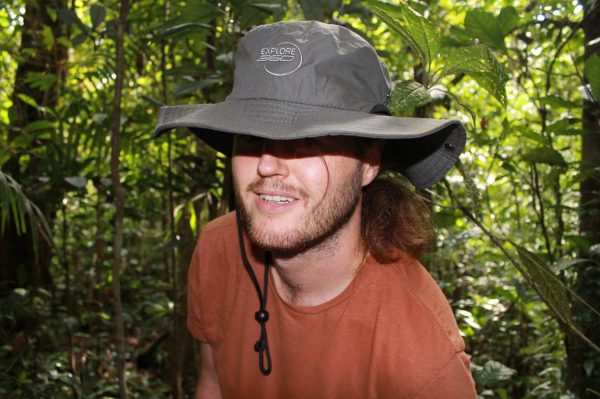Hey, this is Sam Jones! Earlier in 2019 I finally moved to Manaus and took a job at INPA. I say finally because I had flirted with the idea for quite some time. Now I often get asked the enduringly difficult question “What are you doing here?”. The short answer is that I’m working as a soil ‘biogeochemist’ on the ATTO project. This is a bit of catch-all jargon. What does it really mean? Well, I want to understand how interactions among the biological, physical and chemical elements of terrestrial ecosystems, particularly in the soil, influence their connection to the wider Earth system. I know this is still a little opaque, so maybe some examples are in order.
I studied for my PhD at the University of Edinburgh in Scotland. But a lot of that time I actually spent in south-eastern Peru. There, I was trying to work out which environmental conditions control the balance between the production and consumption of methane, a powerful greenhouse gas. So I looked at soils of little-studied forests, grassland and wetland ecosystems. These were spread across a transect spanning approximately 3000 m in elevation between the Amazon basin and humid tropical Andes. After this, I moved on to a post-doctoral position at INRA in France. There I focused on improving our understanding of how soils influence the isotopic composition of carbon dioxide and the concentration of carbonyl sulfide. Both are potential tracers of the wider variations in the carbon cycle in the atmosphere. Keeping with the tropical theme this work took me to the Australian wet tropics.
Around this time I also became involved in collaboration with researchers from the Max Planck Institutes in Germany. Building on this, I’m now focused on gaining a more comprehensive understanding of the carbonyl sulfide cycle of the ecosystems found at ATTO. Specifically, our aim is to improve our ability to use atmospheric measurements of this trace gas to track variations in the regional carbon cycle. The people at the ATTO field station make it a really enjoyable place to work. And the infrastructure available, like continuous electricity, really makes it possible to make measurements that wouldn’t be feasible elsewhere.


